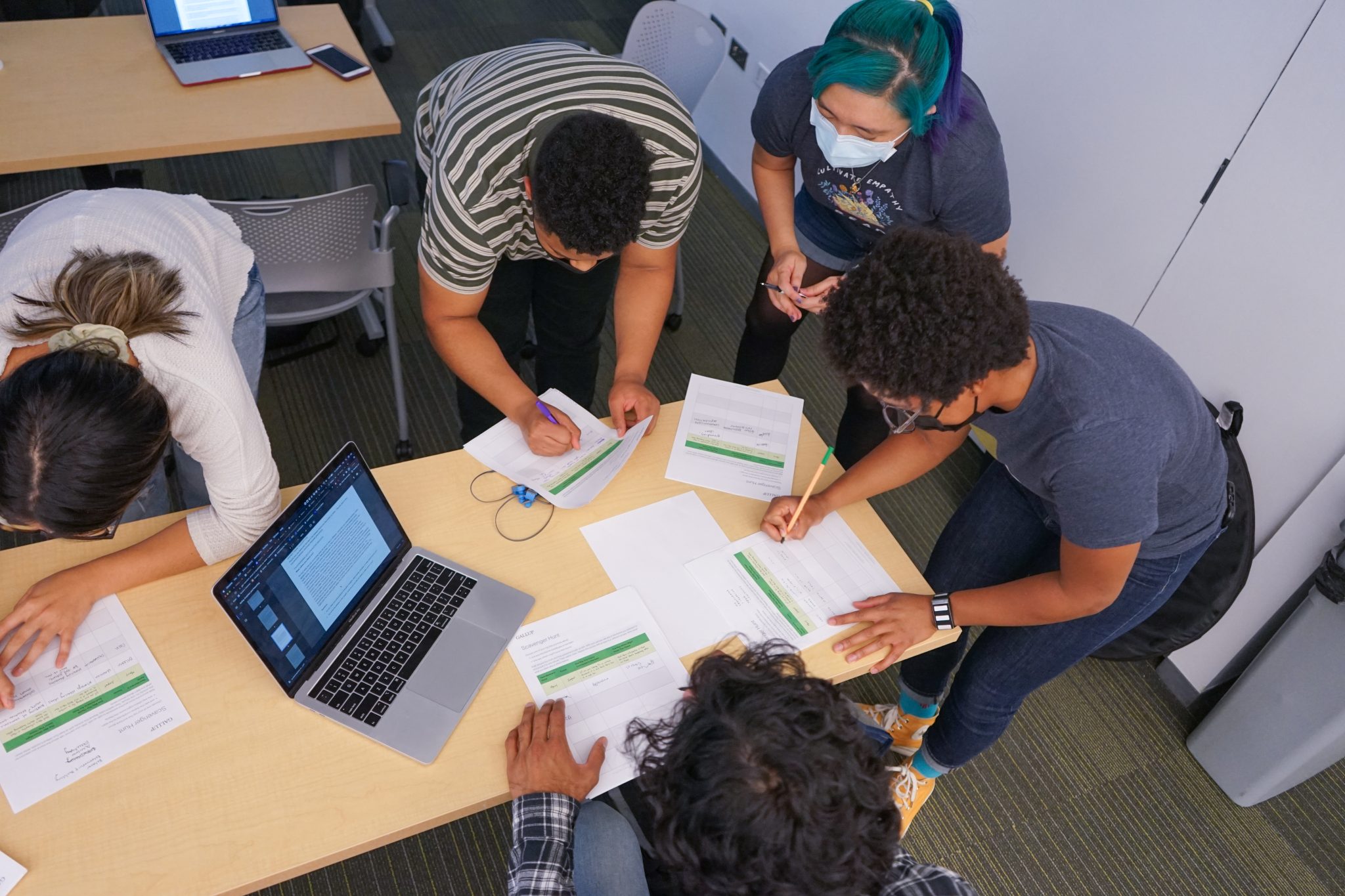More software professionals and businesses are working from home than ever before. The pandemic prompted a sudden need for distributed work teams, creating a digital collaboration boom. Existing applications like Figma/Figjam, MIRO, and MURAL have expanded their repertoire to include remote collaboration options, and even Google jumped into the fray by adding whiteboarding, breakout rooms, and other brainstorming tools to Google Meet.
This shift forced many industries (such as government, utility, and health) to become more digital-savvy. They needed tools beyond video calling — they needed to be able to modernize their businesses without everyone being in the same location.
Collaboration Styles
Despite the short time that remote work has become commonplace, countless ways to collaborate and brainstorm when not working in the same space have emerged. Remote collaboration generally falls into three types: Social, Asynchronous, and Silent.
Social collaboration
This collaboration style is what most people likely think of when they think of a traditional, in-person brainstorming session. It usually involves a group joining a collaborative video call for a specific purpose and voicing their ideas to everyone. These can be highly energetic and fast-paced sessions, as excitement about good ideas is indeed contagious.
However, this excitement and consensus can cause others to hold back on their great ideas. In my experience, social collaboration works best in pairs or well-established teams where everyone knows each other’s working styles and approaches.
Asynchronous collaboration
This style of collaboration happens “offline,” where leave-behinds, designs, and documentation are sent to another party for review via email, Dropbox, or a documentation repository platform like Confluence or Drive. The benefit of this approach is that the reviewing party has time and freedom to look over content at their own pace, adding little to no pressure to reviewing and adding feedback.
The drawback of asynchronous collaboration is a lack of engagement between team members, meaning the leave-behinds can cause confusion without proper context or guidelines. Sharing work for others to review can lead to the expectation that the work is in a completely (or almost) finished state — which can provoke undue stress if it doesn’t match their expectations.
Additionally, team members may have false expectations and create feedback based on those assumptions, which can be unintentionally hurtful or contradictory. The longer these comments are left unaddressed, the more difficult and personal it can become to respond. Asynchronous collaboration works best in established relationships with defined guidelines set up beforehand.
Silent collaboration
Silent collaboration is a mix of both asynchronous and social collaboration. Teams come together to silently ideate on a specific solution or problem. Tandem’s weekly Design Critique meetings utilize the silent collaboration method by having a designer explain their thoughts behind their designs and then setting a timer for team members to individually add comments silently while all still on the same call.
After the time is up, the group reviews individual comments and addresses any unknowns or questions on the spot. A downside of this approach is that the timed sessions can create pressure for some to generate ideas or comments. If unprepared, silent collaboration can also make some team members a bit uncomfortable, as silence can be a hard mental block for some.
Top 3 Collaboration Tips
Having collaborated with distributed teams for nearly a decade, I’ve uncovered 3 best practices to draw out the best ideas from your entire team while collaborating:
1) Provide guidelines upfront
Regardless if your team is in person or remote, it’s important to ensure that everyone is aligned on the goals of the meeting. People generate the best ideas when they know what they are expected to do. It’s best practice to create and share an agenda for the meeting, provide clear expectations and guidelines upfront, and leave space and time for team members to review and respond.
2) Generate separately, synthesize together
This idea subscribes to the Diverge and Converge design thinking methodology, which is that people who generate ideas on their own (without the fear of group judgment and comparison) come up with more varied and creative ideas than when collaborating socially in a group setting. Silent and async collaboration accomplish this by having team members silently ideate in their own corners or boards.
What teams often miss from this is the most key part: coming back together as a team to discuss all of the ideas. Not only will coming together as a team bring more individual participants’ ideas to the table, it also brings in ideas that might have been downplayed by the wider group in a social collaboration setting (or even worse, unsaid). Coming together to discuss will also help the team grow more comfortable with each other as they learn more about how everyone thinks.
3) Accommodate for the least comfortable person on the team
Make sure you plan your team collaborations around getting the best ideas from everyone, not just what’s easiest to run or what you’re most comfortable with. The only way to make collaboration mutually beneficial for everyone is ensuring the whole team feels comfortable with the approach. This can be hard to figure out how to do; Teams are made up of diverse people with their own histories, ideals, and biases, so there’s no umbrella rule that works for all teams. Here are a couple of ideas for encouraging brainstorming that may work for your team:
- Run an icebreaker to help people get more comfortable with each other (and the tool you’re using to collaborate). Figjam, for example, has excellent icebreakers built in — there are thousands of user-created icebreakers to pull from. Whatever tool you use, make sure the icebreaker is something light and easy to bring team members’ walls down, empowering them to chat openly. This comfort-building helps get more ideas flowing.
- When running a brainstorming collaboration, it’s good practice to assign people a set number of ideas to generate. Having no guardrail can cause people’s minds to wander, and they may not generate any ideas because they expect that others will. On the other hand, having each person come up with a set 3-4 ideas always brings more ideas to the table.
The past few years have forced the digital and professional industries to become more agile and remote-friendly — not just with video meetings, but with collaboration and ideation as well. Companies are still adapting and finding new ways to collaborate when not co-located.
Regardless of how you choose to collaborate and brainstorm with your team — socially, silently, or asynchronously — it’s always good to set expectations, ensure everyone’s comfort with the approach, and give people space and time to generate their ideas without pressure.









